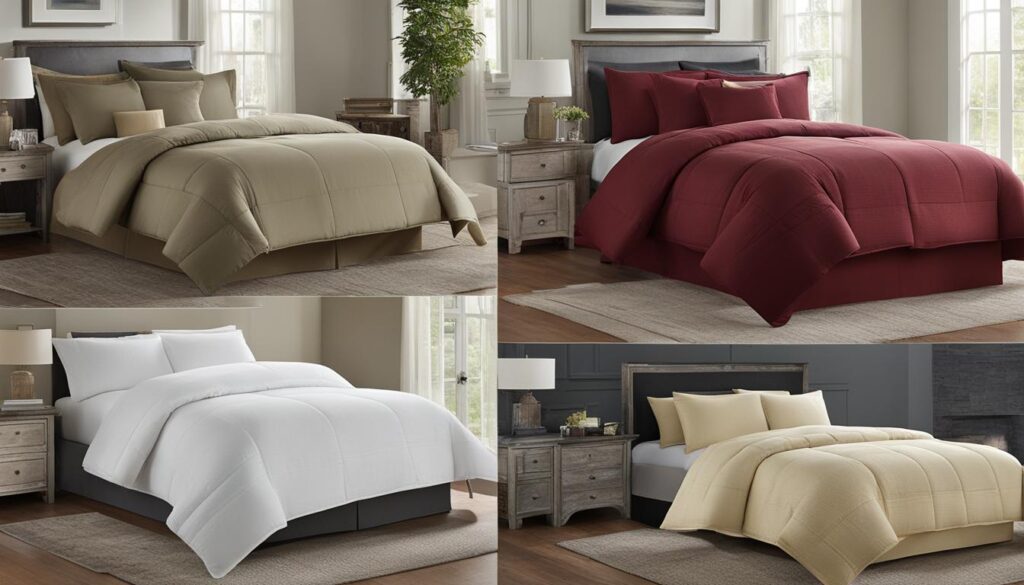How Long Does Bedding Last? 7 Cozy Secrets for a Longer Life

Ever wondered how long does bedding last—like really last? If you’ve woken up to scratchy sheets or a pancake-flat pillow, you’re not alone. Bedding is one of those everyday essentials we take for granted… until it’s not doing its job anymore. Whether it’s your favorite set of linen sheets or that fluffy comforter you can’t sleep without, knowing when (and how) to replace your bedding is key to keeping your sleep sanctuary fresh and cozy.
In this guide, we’ll dive into the lifespans of different bedding types and share practical, down-to-earth tips to keep everything in tip-top shape. Curious about industry recommendations? Here’s a helpful resource from The Company Store on how often to replace sheets.
How Long Does Bedding Last? A Quick Breakdown
| Bedding Type | Average Lifespan |
|---|---|
| Sheets | 3–5 years (cotton/linen) |
| Comforters | 5–20 years |
| Pillows | 1–2 years |
| Decorative Pillows | 3–5 years |
| Mattress Toppers | 3–5 years |
Pro Tip: High-quality materials like bamboo or TENCEL™ can stretch those years even further—plus, they feel dreamy against your skin! You can also explore more lifespan details at Purple’s guide on how long sheets last.
Sheets: The Bedrock of Comfort
Your sheets work hard every night, soaking up sweat, skin oils, and everything in between. On average, good-quality sheets last 3 to 5 years. Polyester blends wear out faster (think 1–2 years), while natural fibers like cotton or linen hang in longer.
Watch for These Signs:
- Pilling or rough texture
- Thinning spots or small tears
- Faded color or loss of softness
Care Tip: Wash your sheets weekly in cold water and skip the fabric softener. It actually breaks down fibers over time! For more ways to boost your bedding’s longevity, peek at our Choosing the Right Bedding, Mattress, and Hygiene guide.
Comforters: Your Cozy Cloud
Comforters can last a surprisingly long time—up to 20 years for down-filled ones if cared for properly, and around 5–10 years for down-alternatives.
Time to Replace If You Notice:
- Clumps or flat spots
- A musty smell that won’t go away
- Fading or worn-out fabric
Keep It Fluffy:
- Use a duvet cover (total game changer!)
- Fluff regularly to maintain loft
- Follow care labels carefully for washing
Want extra tips? Check out Choosing the Right Bedding for expert comforter care.
Pillows: Head and Neck Heroes
Pillows usually need replacing every 1 to 2 years. Even if yours looks fine, if you’re waking up with neck pain or notice lingering odors, it’s probably time.
Look for:
- Lumps or flattened spots
- Persistent odors
- Increased allergies
Hygiene Hack: Use pillow protectors and wash both pillow and protector regularly. Our Mattress Hygiene and Cleaning post has even more tips for a fresh bed setup.
3 Bedding Myths (Busted!)
1. Higher thread count = longer-lasting sheets. Not always! Quality of fibers matters more than the count.
2. Comforters don’t need washing. They do—just less frequently than sheets. Aim for once every season.
3. Pillows last forever. Nope. Even the fanciest pillows need replacing regularly to keep your neck happy.
7 Simple Ways to Extend Bedding Life
1. Rotate Bedding Sets
Give each set a break by rotating between at least two.
2. Wash With Care
Cold water + gentle cycle = bedding that lasts.
3. Skip Fabric Softeners
These actually wear down fibers faster.
4. Don’t Overload the Washer
Crowded loads = rougher washing and quicker wear.
5. Air Out Regularly
Let comforters and pillows breathe to stay fresh.
6. Store Smart
Use breathable bags and keep bedding in a dry, cool spot.
7. Fluff Often
It keeps things lofty and supportive.

Final Thoughts: Keep It Cozy, Keep It Clean
Knowing how long does bedding last and taking simple steps to care for your sleep essentials means you’ll enjoy a fresher, comfier bed every night. When in doubt? Trust your senses—if something feels off, smells weird, or just isn’t cozy anymore, it’s time for a refresh.
Need more cozy inspo? Snuggle up with our Types of Mattresses guide or explore fresh tips in Mattress Hygiene and Cleaning. Sweet dreams!














